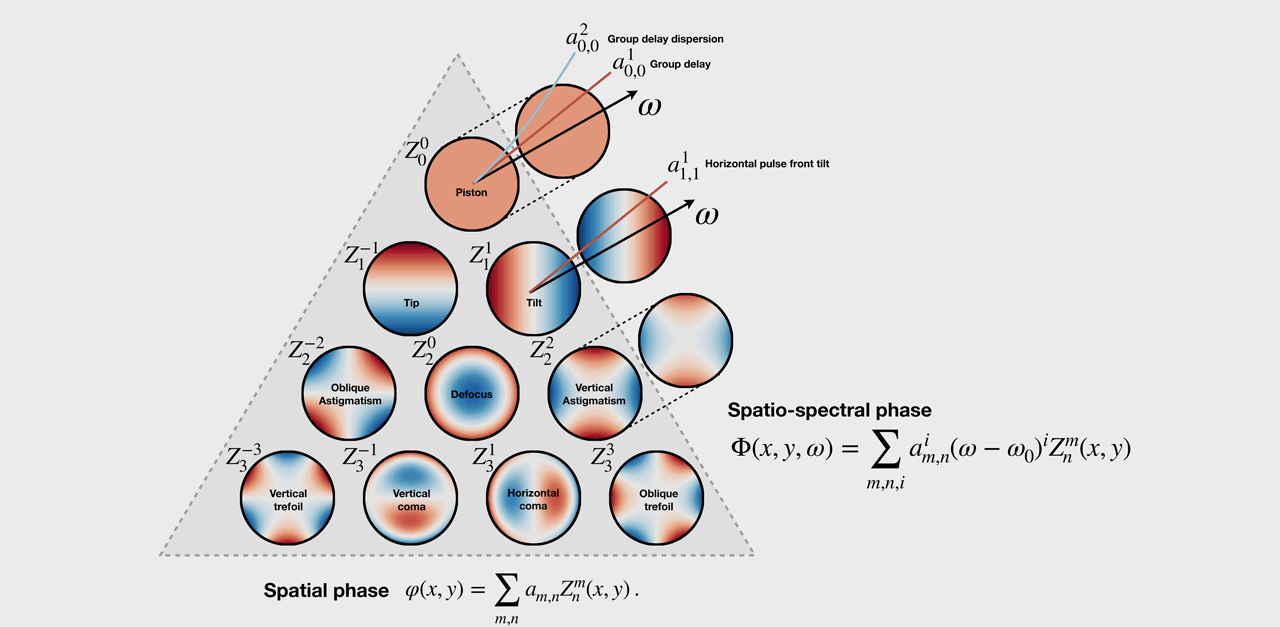A team of scientists led by Andreas Döpp at LMU Munich’s PULSE laboratory have recently published two papers that detail innovative methods for measuring spatio-temporal couplings in high-power lasers. These methods offer a more streamlined and quantitative approach compared to traditional techniques. “Spatio-temporal couplings are critical in determining the focused intensity of high-power lasers,” Döpp explains. “In our recent Optics Express paper, we present a simplified process for diagnosing these couplings, which have traditionally been either qualitative or required a large number of measurements.”
The team’s method, dubbed FALCON (Fast Acquisition of Laser Couplings using Narrowband filters), leverages the expression of the spatio-spectral phase in terms of a Zernike-Taylor basis [1]. This mathematical approach significantly simplifies the problem and allows for the direct quantification of the coefficients for common spatio-temporal couplings. Nils Weisse, the first author of the study, shares, “We’ve designed FALCON to be easily implemented in existing facilities. It’s a straightforward and cost-effective solution that provides a quick way to measure laser couplings.”
The team has successfully employed FALCON at the ATLAS-3000 petawatt laser to routinely characterize spatio-temporal couplings. They have also introduced an implementation based on imaging Fourier transform spectroscopy, which allows for precision measurements, albeit with longer measurement times. The technique has already garnered considerable interest in the high-power laser community. Just last week, the two lead authors were invited to the ELI-Beamlines facility in Prague to characterize their state-of-the-art laser system.
In a second paper [2], published simultaneously in the journal “High-Power Laser Science and Engineering”, the team outlines their future plans. “We are working diligently to develop a single-shot version of the method to explore shot-to-shot fluctuations of spatio-temporal couplings,” Döpp shares. To achieve this goal, the team is harnessing the power of artificial intelligence and utilizing cutting-edge neural networks.
The research comes at a critical time, as high-power laser facilities such as CALA in Garching are moving towards ever higher peak intensities and new concepts involving the control of spatio-temporal components of the laser gain traction.
1. N. Weisse, J. Esslinger, S. Howard, F. M. Foerster, F. Haberstroh, L. Doyle, P. Norreys, J. Schreiber, S. Karsch, and A. Döpp, "Measuring spatio-temporal couplings using modal spatio-spectral wavefront retrieval", Opt. Express 31, 19733-19745 (2023)
2. S. Howard, J. Esslinger, R. Wang, P. Norreys, and A. Döpp, "Hyperspectral compressive wavefront sensing" High Power Laser Science and Engineering, 11, E32 (2023)

